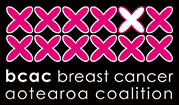A new study shows that there’s been a small, but significant increase in the incidence of advanced breast cancer in young American women aged 25 to 39, without a corresponding increase in older women.
The research, published in the Journal of the American Medical Association (JAMA), analysed United States breast cancer data from 1973 to 2009 and looked at breast cancer incidence, incidence trends, and survival rates.
It showed that since 1976, there has been a steady increase in the incidence of metastatic breast cancer in 25 to 39-year-old women, from 1.53 per 100,000 in 1976 to 2.90 per 100,000 in 2009.
The researchers note that this represents an average compounded increase of 2.07 per cent per year over the 34-year interval, a relatively small increase, but they say “the trend shows no evidence for abatement and may indicate increasing epidemiologic and clinical significance.”
Dr Rebecca H. Johnson, of Seattle Children’s Hospital and University of Washington, Seattle, and colleagues say breast cancer is the most common malignant tumour in adolescent and young women aged 15 to 39, accounting for 14 per cent of all cancers in men and women in this age group.
“The trajectory of the incidence trend predicts that an increasing number of young women in the United States will present with metastatic breast cancer in an age group that already has the worst prognosis, no recommended routine screening practice, the least health insurance, and the most potential years of life.”
However, the authors go on to say that further study is needed and data from other countries should also be examined.
BCAC chair, Libby Burgess, agrees that more research is required before any hard and fast conclusions can be drawn.
“This is an observational and retrospective study of existing data that shows some change over a long period of time. It needs to be verified by further studies using large population databases before this apparent rise in incidence of advanced breast cancer in younger women can be confirmed.”
Libby says it’s possible that better detection and diagnosis could partly explain the trend.
“This data is certainly very concerning. Hopefully other databases will now be mined to better understand what has driven this change in breast cancer diagnosis rates in young women over the last 35 years.
BCAC advises that the most important thing young women can do to ensure their breast health is to know their breasts and to seek medical help if they notice any changes. Check out our page on breast awareness for further information.



